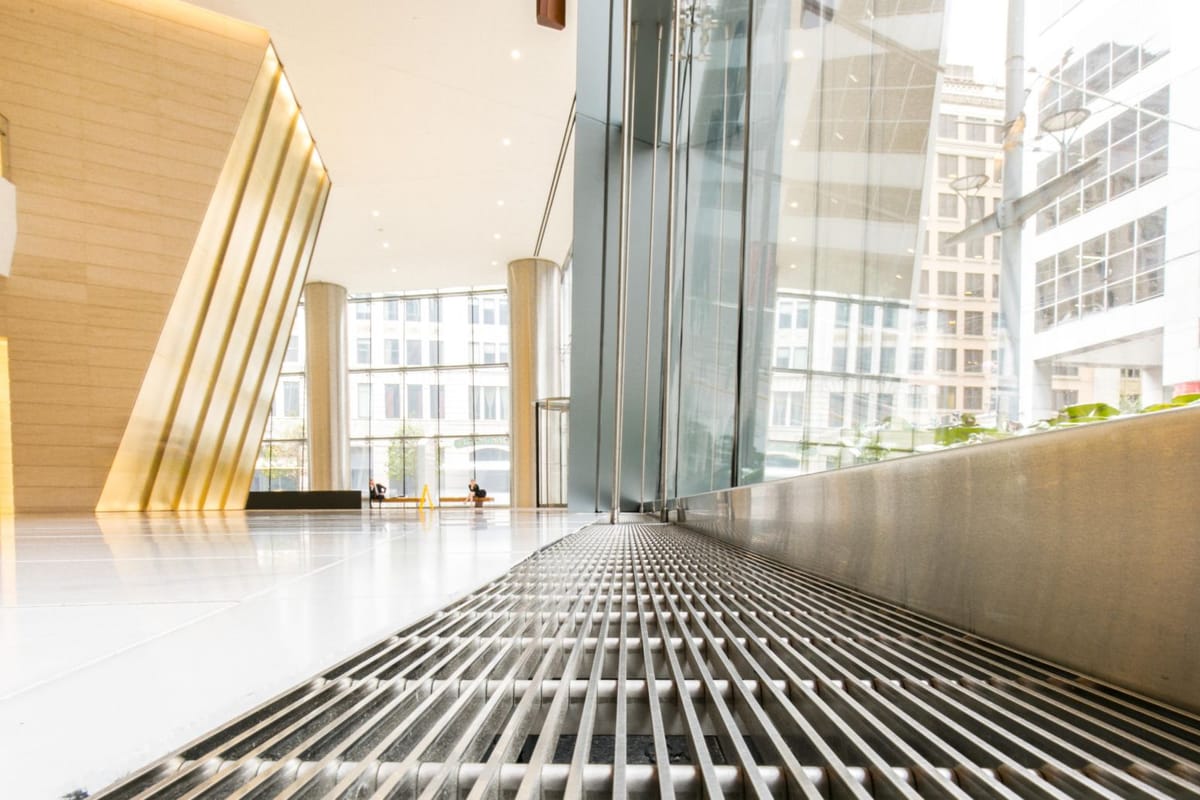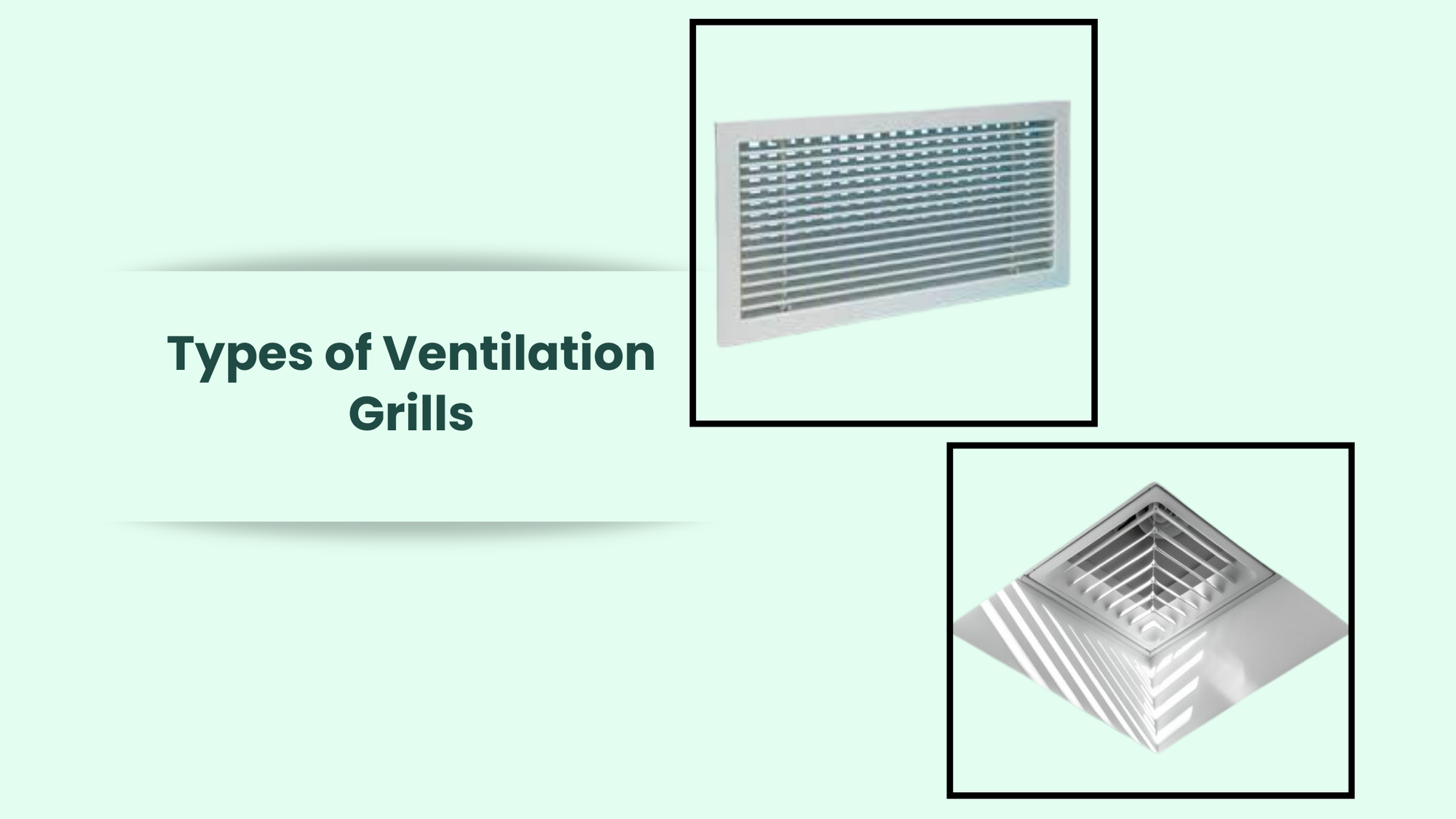Ventilation Grill Designs That Enhance Airflow and Aesthetics

Introduction Ventilation grills are essential components in both indoor and outdoor environments, designed to facilitate efficient airflow while contributing to the overall aesthetic of a space. They allow for the exchange of fresh outdoor air with stale indoor air, playing a critical role in maintaining a healthy indoor climate. Beyond their functional purpose, modern ventilation grill designs are increasingly recognized for their ability to blend seamlessly with architectural elements, enhancing the visual appeal of a space while ensuring optimal air circulation.
The Significance of Ventilation Grills
While ventilation grills primarily serve to regulate airflow, their importance extends beyond functionality. Today, designers focus on integrating grills that reflect personal style, architectural themes, and sustainability concerns. The evolution of ventilation design emphasizes a balance between practicality and aesthetics, allowing these components to be both visually appealing and highly efficient.
Types of Ventilation Grills

Ventilation grills can be categorized into three primary types based on their function and location:
1. Exterior Ventilation Grills
- Materials & Durability: Exterior grills are made from robust, weather-resistant materials such as aluminum, galvanized steel, or stainless steel to withstand environmental elements like rain, wind, and extreme temperatures.
- Security Features: Some designs include anti-vandal features and protective mesh screens to prevent intrusion by insects or small animals.
- Performance Considerations: These grills must optimize thermal and acoustic insulation while ensuring adequate airflow without allowing excessive moisture or dust to enter buildings.
2. Interior Ventilation Grills
- Material Selection: Unlike exterior grills, interior grills prioritize moisture resistance and aesthetic appeal. Materials such as powder-coated metal, plastic, and treated wood are commonly used.
- Application Areas: They are essential in high-humidity areas like kitchens and bathrooms, where resistance to moisture, heat, and steam is crucial.
- Floor & Wall Integration: Interior grills are also designed for floor placement, requiring reinforced materials to withstand foot traffic without compromising airflow efficiency.
3. Decorative Ventilation Grills
- Customization: Decorative grills offer homeowners and architects the ability to personalize dimensions, materials, and finishes to match interior aesthetics.
- Material Varieties: Options include wooden panels, intricate metal designs, and custom laser-cut motifs that serve as statement pieces while maintaining ventilation performance.
- Seamless Design Integration: Many modern solutions are flush-mounted or hidden within architectural elements to maintain a sleek, minimalist appearance.
Key Trends in Ventilation Grill Design
As ventilation design continues to evolve, several key trends are shaping the market:
- Customization & Personalization
- Consumers increasingly seek grills that align with their interior design preferences, leading to an expansion of material, size, and finish options.
- Hidden ventilation solutions, including minimalist air return covers and concealed grills, are becoming popular in contemporary designs.
- Sustainability & Energy Efficiency
- Manufacturers are shifting towards eco-friendly materials, such as recycled aluminum and sustainably sourced wood, to reduce environmental impact.
- Smart ventilation systems with automated airflow adjustments are emerging, optimizing energy efficiency and indoor air quality.
- Advanced Material Technologies
- The development of corrosion-resistant coatings and hybrid materials (e.g., metal cores with wood finishes) enhances durability and aesthetic versatility.
- Innovations in nano-coatings allow for self-cleaning surfaces, reducing maintenance requirements.
Materials Used in Ventilation Grills
The choice of materials plays a crucial role in determining the durability, functionality, and appearance of ventilation grills.
1. Plastic
- Lightweight & Affordable: Commonly used in residential applications where durability is less of a concern.
- Limitations: Prone to wear over time and less resistant to extreme temperatures or impacts.
2. Aluminum
- Corrosion-Resistant & Durable: Ideal for both interior and exterior applications, especially in humid or coastal areas.
- Modern Aesthetic: Frequently used in contemporary architectural designs due to its sleek appearance.
3. Steel
- Heavy-Duty & Impact-Resistant: Best suited for commercial and industrial settings where durability is a priority.
- Maintenance Requirements: Requires protective coatings to prevent rusting in high-humidity environments.
4. Brass
- High-End Aesthetic: Often used in luxury or vintage-style interiors.
- Superior Corrosion Resistance: More durable than standard steel but comes at a higher cost.
5. Hybrid Designs (Wood & Metal Combinations)
- Enhanced Aesthetics: Combines the natural warmth of wood with the strength of metal.
- Best for Upscale Interiors: Common in high-end residential and boutique commercial spaces.
Factors Influencing Ventilation Grill Design
Aesthetic Considerations
- Architectural Harmony: Modern ventilation grills are designed to blend with architectural styles, whether traditional, industrial, or minimalist.
- Customization Options: Various finishes, colors, and patterns allow designers to integrate ventilation elements seamlessly into their projects.
Functional Requirements
- Optimized Airflow: The design must ensure proper ventilation without creating unwanted noise or static pressure.
- Durability & Maintenance: Grills should be easy to clean and resistant to environmental stressors.
Health & Safety Considerations
- Indoor Air Quality: Well-designed ventilation grills contribute to healthier indoor environments by preventing mold growth and improving air circulation.
- Compliance with Safety Regulations: Designs must adhere to local building codes and HVAC standards to ensure efficiency and safety.
Sustainability & Environmental Impact
- Eco-Friendly Materials: The industry is moving towards the use of recycled metals and biodegradable plastics.
- Energy-Efficient Ventilation Solutions: Some advanced designs include sensors that adjust airflow based on occupancy and air quality conditions.
Installation Considerations
Correct Sizing & Placement
- Optimizing Free Area & Airflow: Incorrectly sized grills can lead to inadequate heating, cooling, or air exchange.
- Strategic Positioning: Placement affects ventilation effectiveness, particularly in HVAC systems.
Compliance with Regulations
- Building Codes & Standards: Adhering to legal requirements ensures both safety and efficiency.
- Fire Safety Considerations: Some installations require fire-rated grills for enhanced protection.
Professional Installation
- Expert Assessment: HVAC professionals can determine the best grill types and placements for specific spaces.
- Regular Inspections: Ensuring long-term performance and compliance with safety standards.
Maintenance of Ventilation Grills
Cleaning Procedures
- Routine Dust & Debris Removal: Using soft brushes or vacuums prevents blockages.
- Deep Cleaning: Mild cleaning solutions or hot water can help remove grime and oil stains.
Regular Inspections
- Checking for Damage: Rust, cracks, and warping should be addressed promptly.
- Ensuring Proper Functionality: Fixed and adjustable deflection bars should be inspected for optimal performance.
Professional Maintenance
- Annual HVAC Checkups: Professional inspections help maintain efficiency and indoor air quality.
- Filter Replacements: Ensuring filters and airflow paths remain unobstructed for peak performance.
Conclusion
Ventilation grills have evolved from being purely functional elements to integral design components that enhance both aesthetics and air quality. With advancements in materials, customization, and sustainability, modern ventilation solutions cater to both practical needs and architectural trends. As innovation continues, the future of ventilation grill design lies in the seamless fusion of performance, style, and environmental responsibility.
